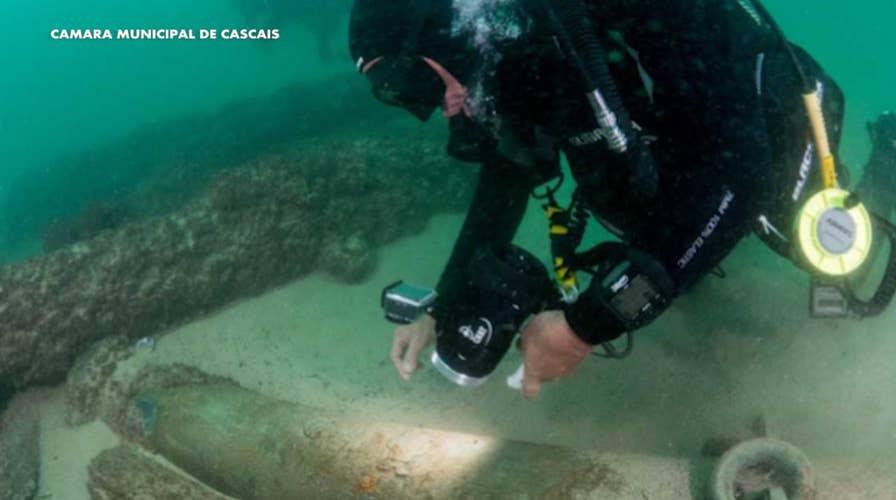400-year-old shipwreck thrills experts
How a shipwreck discovery in Portugal is leading archaeologists to new clues about the legendary spice trade.
A 400-year-old shipwreck discovered off the coast of Portugal has been hailed as a “significant” archaeological find.
The municipal council of Cascais, a resort city near Lisbon, said Monday the Portuguese ship was involved in the hugely lucrative spice trade between Portugal and India. Pepper corns, cowry shells used in the slave trade and bronze artillery pieces litter the wreck site. The cannons feature the Portuguese national coat of arms.
Experts say that that shipwreck dates from the late 16th century to the early 17th century. The site, which is 39 feet below the water’s surface, covers an area spanning an estimated 328 feet by 164 feet.
SITE OF 1503 SHIPWRECK TIED TO VASCO DA GAMA FOUND OFF OMAN
Cascais Mayor Carlos Carreiras described the wreck as one of the most significant archaeological discoveries in Portugal over the last decade, according to Sky News, citing Portuguese newspaper Publico.

The shipwreck has been hailed as a significant discovery. (Camara Municipal de Cascais)
In addition to the city of Cascais, the New University of Lisbon and the Portuguese Navy also participated in the project.
Officials said in a statement the wreck was found last month during dredging at the mouth of the River Tagus, on Portugal's Atlantic coast.
500 YEAR-OLD SHIPWRECK LOADED WITH GOLD FOUND IN NAMIBIAN DESERT
Preliminary excavations have also found porcelain dating from the period of China's Wanli Emperor in the late 16th and early 17th centuries.
The wreck is located in an area known as the Underwater Archaeological Chart of the Municipality of Cascais (PROCASC) that contains a host of shipwrecks dating back to the Roman era.
The shipwreck dates back to a time when Portugal was the center of a far-flung trading and colonial network that linked Europe, Africa, Asia and South America.
In 2016, archaeologists said that they had discovered the 500-year-old wreckage of Portuguese ship off Oman. The ship, Esmeralda, was piloted by an uncle of explorer Vasco da Gama.
Also in 2016, diamond miners in Namibia found the remains of a gold-laden Portuguese ship that went missing 500 years ago en route to India.
Walt Bonner and The Associated Press contributed to this article.
Follow James Rogers on Twitter @jamesjrogers




















